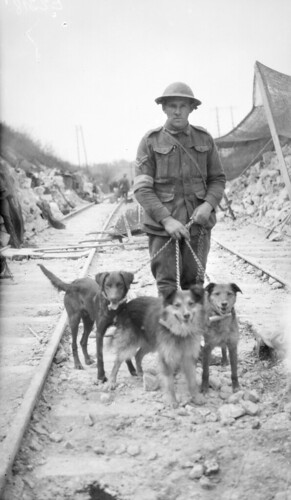The Battle of Amiens (also known as the Third Battle of Picardy (French: 3ème Bataille de Picardie)), which began on 8 August 1918, was the opening phase of the Allied offensive later known as the Hundred Days
 Offensive that ultimately led to the end of the First World War. Allied forces advanced over seven miles on the first day, one of the greatest advances of the war, with Henry Rawlinson's British Fourth Army playing the decisive role.
Offensive that ultimately led to the end of the First World War. Allied forces advanced over seven miles on the first day, one of the greatest advances of the war, with Henry Rawlinson's British Fourth Army playing the decisive role.
The battle is also notable for its effects on both sides' morale and the large number of surrendering German forces. This led Erich Ludendorff to describe the first day of the battle as "the black day of the German

On 21 March 1918, the German Empire had launched Operation Michael, the first in a series of attacks planned to drive the Allies back along the length of the Western Front. With the signing of the Treaty of Brest-Litovsk with communist Russia, the Germans were able to transfer hundreds of thousands of men to the
 These offensives were intended to translate this advantage into victory.
These offensives were intended to translate this advantage into victory. Operation Michael was intended to defeat the right wing of the British Expeditionary Force, but lack of success before Arras ensured the ultimate failure of the offensive.
Operation Michael was intended to defeat the right wing of the British Expeditionary Force, but lack of success before Arras ensured the ultimate failure of the offensive. A final effort was aimed at the town of Amiens, a vital railway junction, but the advance had been halted at Villers-Bretonneux by the Australians supported by other units scraped together on a piecemeal basis on 4 April.
A final effort was aimed at the town of Amiens, a vital railway junction, but the advance had been halted at Villers-Bretonneux by the Australians supported by other units scraped together on a piecemeal basis on 4 April.Subsequent German offensives — Operation Georgette (9 April–11 April), Operation Blücher-Yorck (27 May), Operation Gneisenau (9 June) and Operation Marne-Rheims (15 July–17 July) — all made advances elsewhere on the Western Front, but failed to achieve a decisive breakthrough.

By the end of the Marne-Rheims offensive, the German manpower advantage had been spent and their supplies and troops were exhausted.

The Allied generalissimo, General Ferdinand Foch ordered a counteroffensive which led to the Second Battle of the Marne, after which victory he was promoted to Maréchal (Marshal of France). The Germans,
 recognising their untenable position, withdrew from the Marne to the north. Foch now tried to move the Allies back onto the offensive.
recognising their untenable position, withdrew from the Marne to the north. Foch now tried to move the Allies back onto the offensive.PlanFoch disclosed his plan on 23 July 1918[6] following the German retreat that had begun on 20 July.
 The plan called for reducing the Saint-Mihiel salient (which would later see combat in the Battle of Saint-Mihiel) and liberating the railroad lines that ran through Amiens.
The plan called for reducing the Saint-Mihiel salient (which would later see combat in the Battle of Saint-Mihiel) and liberating the railroad lines that ran through Amiens.The commander of the British Expeditionary Force, Field Marshal Sir Douglas Haig, already had plans in place for an attack near Amiens. When the British retreat had ended in April, the headquarters of British
No comments:
Post a Comment